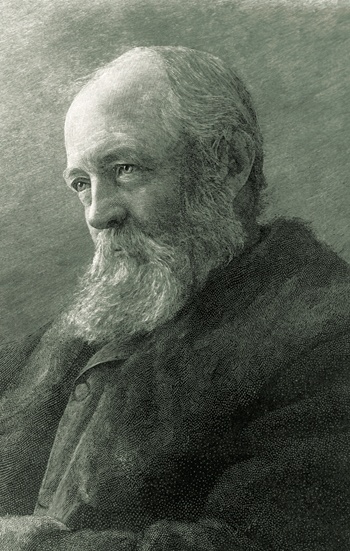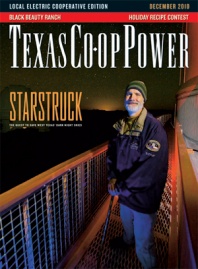In 1853, five years before Frederick Law Olmsted became famous as the landscape architect who designed New York City’s Central Park, he created another reason to be remembered.
Traveling through Texas on assignment for The New York Daily Times, the Connecticut Yankee set off with his brother John, a mare named Fanny, “a gay little roan creole pony,” and a pleasant pack mule named Mr. Brown. For six months, they rode down rough dirt roads, camped or slept in log cabins or guest inns, and talked to the people they met along the way. The resulting travel narrative, which Frederick wrote as a series of articles and John edited into the book A Journey through Texas, is a highly enjoyable romp through Texas in the early settlement days before the Civil War.
In his few short months in Texas, Olmsted left us with a timeless legacy: a snapshot of a people and a place before the Civil War changed everything. Anglos were pouring in to pursue the promise of cheap land. The mostly Southern immigrants brought their culture with them, and slavery was soaring. A large segment of the population—including Olmsted—packed Colt Navy revolvers.
Olmsted began his journey in East Texas, where he spent the night in settlers’ drafty cabins and complained about the lack of basic provisions and the unvarying diet of pork and corncakes. Traveling along the Old San Antonio Road, he met wagon trains of immigrants arriving from the Southern states to make a new start in Texas:
“Before you come upon them you hear ringing through the woods the fierce cries and blows with which they urge on their jagged cattle. Then the stragglers appear, lean dogs or fainting negroes, ragged and spiritless. An old granny hauling on by the hand a weak boy—too old to ride and too young to keep up. An old man, heavily loaded with rifle. Then the white covers of the wagons jerking up and down as they mount over a root or plunge into a rut, disappearing one after another where the road descends.”
Visiting the German settlements in the Hill Country, he was impressed by the social organizations and schools he found there. Olmsted was fervently against slavery, and he cites the Germans’ productive farms and civilized society as proof that voluntary labor was both morally and economically superior to slavery. “That such a community—generally industrious, active-minded, and progressively intelligent—can never exist in intimate connection with enslaved labor, I am well-convinced,” he wrote in a newspaper article.
The book, meanwhile, is enlivened by Olmsted’s conversations with ordinary people—cotton farmers and innkeepers, runaway slaves and new immigrants, Anglos and Mexicans—which he transcribed with dialect intact. He met a runaway slave working as a mechanic in Mexico, who told Olmsted that in the past three months, he’d counted 40 slaves escaping Texas into Mexico. Near Gonzales, he passed Tejano cart drivers, and outside San Antonio he visited an encampment of resettled Lipan. Upon meeting the Lipan chief Castro, Olmsted broke a tense silence by telling the chief about the Indians he’d seen in San Fernando, Mexico.
“What kind?” asked the chief.
“Lipans, Mescaleros, Kickapoos, Comanches, Tonkaways, Seminoles.—All drunk.—All fools.”
Olmsted continues, writing, “This seems to excite a great hilarity in the chief. He wished me to say it again and again, repeating, ‘so they were all drunk, were they,’ and making his friends enjoy it with a sort of sparkling chuckle.”
Infused with Mark Twain-like humor, the book is filled with Olmsted’s excellent descriptions of the natural landscape. Of the wildflowers on the coastal prairies, he writes, “The beauty of the spring-prairies has never been and never will be expressed. It is inexpressible.” He remarks on a gorgeous night sky in which “the sky seems nearer in Texas.”
And his description of San Antonio’s San Pedro Springs will ring familiar to anyone who has been dazzled by a Texas spring: “The whole river gushes up in one sparkling burst from the earth. It has all the beautiful accompaniments of a smaller spring, moss, pebbles, seclusion, sparkling sunbeams, and dense overhanging luxuriant foliage. The effect is overpowering. It is beyond your possible conceptions of a spring. You cannot believe your eyes, and almost shrink from sudden metamorphosis by invaded nymphdom.”
——————–
Elaine Robbins is a frequent contributor to Texas Co-op Power.


